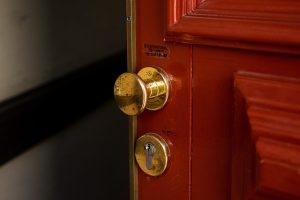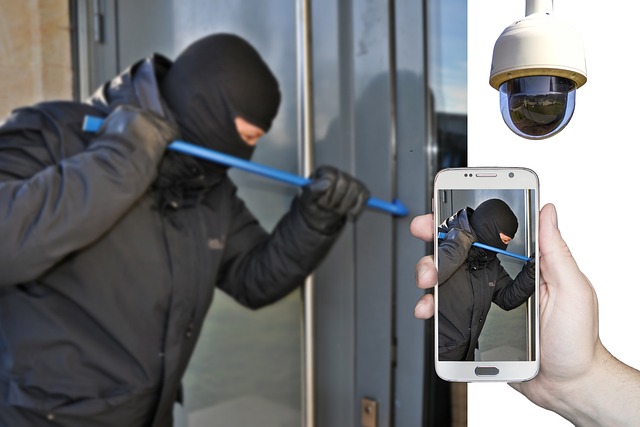Top Strategies for Significantly Reducing Burglary Risks at Home
Activate Your Home Alarm System for Ultimate Security: One of the most effective and essential measures you can take to protect your home from burglary is to ensure that your alarm system is not only installed but actively utilized. Alarm systems have become a fundamental aspect of modern home security, offering a vital layer of protection against unauthorized entry. Surprisingly, many homeowners claim to have these systems but frequently forget to activate them. This oversight is quite perplexing. Just as you would instinctively lock your front door before leaving your house, activating your alarm system should be an automatic routine that you never overlook.
In my household, I utilize a state-of-the-art intrusion alarm system that includes motion sensors thoughtfully positioned in every room, including the garage, along with smoke detectors installed in each area. Before I leave my home, I always take a moment to ensure that all windows and doors are securely locked, activate the alarm, and double-check that the front door is locked. This process takes me just about a minute, but it’s an invaluable investment in my peace of mind and overall safety.
Set Your Alarm System Before Bedtime for Nighttime Protection
A significant portion of burglaries occurs while homeowners are fast asleep, making it absolutely critical to ensure that your alarm system is configured correctly for nighttime protection. Typically, burglars may enter a home while the occupants are upstairs, completely unaware of the theft taking place downstairs. Many modern alarm systems offer a night mode specifically designed for multi-story homes, allowing you to keep all sensors on the ground floor active while disabling those on the upper floors.
By doing this, if an intruder attempts to break in downstairs, the alarm will sound, disrupting the silence of the night and ideally prompting the burglar to flee before you even wake up. Each night, I dedicate a few minutes to conduct a comprehensive inspection of my entire house, checking every door and window before activating the alarm system. This nightly routine not only brings me comfort but also significantly enhances my security as I drift off to sleep, knowing that I’ve taken the necessary precautions to protect my home.
Most burglars are notably averse to confrontation, preferring to operate unnoticed. If they encounter any disturbances or alarms, they are likely to abandon their mission. While a small number of intruders may attempt to force their way inside, such occurrences are relatively rare. When answering the door, always exercise caution and ensure you recognize the identity of the visitor. Installing a peephole can provide a safe means of identifying callers before opening the door. While peepholes are affordable and easy to install, consider investing in a camera or a comprehensive CCTV system for enhanced security.
Alternatively, you can also utilize upstairs windows to communicate securely with anyone at your door.
Enhance Home Security by Leveraging CCTV Technology
In recent years, the affordability and accessibility of Close Circuit Television (CCTV) systems have dramatically improved, making them a viable option for many homeowners. The advancement of internet technology has facilitated the real-time transmission of video feeds to mobile devices, offering an additional layer of security. The possibilities for home monitoring are virtually limitless, starting with a simple CCTV camera installed at your front door connected to an indoor monitor to keep an eye on your property.
For those desiring more comprehensive security solutions, consider establishing a network of surveillance cameras throughout your home and yard. A quick internet search for “CCTV security systems” will reveal a plethora of options tailored to fit various security needs and budgets. Investing in a robust CCTV system not only serves as a deterrent to potential intruders but also provides invaluable evidence in the event of a crime, aiding law enforcement in their investigations.
Elevate Your Home Security with Effective Outdoor Lighting Solutions
Burglars thrive in poorly lit areas where they are less likely to be detected. Therefore, implementing effective outdoor lighting is a critical aspect of your home security strategy. There are numerous options available for security lighting, including motion-activated lights that illuminate only when movement is detected, or lights that turn on automatically at dusk and remain lit throughout the night.
Another effective alternative is to use timers to control outdoor lights, ensuring they turn on during the late hours and off in the early morning. Today’s energy-efficient lighting solutions consume minimal electricity, making it feasible to keep your outdoor areas well-lit without incurring excessive costs. A well-lit exterior not only enhances your home’s curb appeal but also significantly increases the likelihood of deterring would-be intruders from targeting your property.
 Avoid Leaving Spare Keys Near Entry Points to Enhance Security
Avoid Leaving Spare Keys Near Entry Points to Enhance Security
One common oversight in home security is the placement of spare keys. While it may seem convenient to have a spare key hidden near your front entrance, this practice can pose a significant security risk. Burglars are well aware of this tactic and often look for keys concealed under mats, flower pots, or within fake rocks. There have even been instances where intruders have used fishing rods and magnets to retrieve keys from inside homes through letterboxes.
It’s highly advisable to store spare keys in a secure and discreet location, well away from entry points. Consider providing a spare key to a trusted neighbor or friend instead. This small change can greatly enhance the security of your home, making it far more challenging for an intruder to gain access to your property.
Install Sturdy Window Locks to Maximize Security
While many modern windows come equipped with adequate security locks, older windows may require additional reinforcement. It is essential to ensure that all windows are securely closed and locked at night. An intruder could easily shatter a window and reach in to manipulate the latch, thereby gaining access to your home.
By ensuring that windows are locked, you create an additional barrier that complicates the entry process for a potential burglar. However, always keep in mind the importance of fire safety; if windows are locked, ensure that at least one can be opened quickly in case of an emergency. If a particular window is your only exit option during a fire, it’s crucial not to secure it completely, allowing for swift evacuation when needed.
Having the ability to open a window quickly can be a life-saving measure, enabling a fast escape in dangerous situations.
Secure Your Garden and Outdoor Areas Against Potential Intruders
While intruders often find it challenging to access upper windows without assistance, providing them with tools like ladders can significantly ease their task. Therefore, it’s crucial to avoid leaving ladders or any climbing aids readily accessible in your garden. Always store any ladders you own securely in your garage or another hidden location.
By taking this simple precaution, you can significantly reduce the likelihood of an intruder gaining access to your home via upper windows. Keeping your outdoor areas organized and free of potential tools for burglary not only protects your property but also enhances your overall security measures.
Utilize Thorn Bushes as Natural Deterrents Against Burglars
Incorporating thorn bushes beneath your windows can serve as an effective barrier against potential intruders. Depending on your garden’s layout, you may strategically plant thorny shrubs directly below windows. Many varieties of thorn bushes possess sharp, resilient spines that can act as a natural deterrent.
As these bushes grow, you can prune them to maintain the right height and coverage, effectively creating a formidable obstacle for would-be intruders. A well-established thorn bush can be exceedingly challenging for an intruder to navigate, particularly if they are not equipped with heavy protective gear. This simple, natural security measure is just one of many small steps that can lead to significant improvements in your home’s safety.
Safeguard Your Valuables to Minimize Losses from Theft
While fortifying the exterior of your home is vital, it’s equally important to secure your valuables inside. In the unfortunate event of a burglary, making it difficult for intruders to locate your most prized possessions can significantly minimize your losses. The most straightforward solution is to limit the number of valuables you keep in your home. By reducing the number of high-value items, you consequently cut down on the potential losses you may face during a break-in.
If you do own small, valuable items, consider concealing them cleverly. For instance, you can store them in an inconspicuous old cardboard box, ensuring that you remember where you placed them during cleanouts. Alternatively, investing in a quality safe is an excellent option. However, it’s crucial that the safe is substantial and securely bolted to the floor to prevent easy removal during a burglary.
Create Decoys to Distract Intruders and Reduce Theft
To deter intruders from leaving empty-handed, consider stocking your home with items that may appear enticing to a thief. Keep in mind that most burglars will only take what they can comfortably carry in one trip, so it’s essential to be strategic about what you display in your home. An intruder might not think twice about taking a few easily accessible items, so consider maintaining a few less valuable items around that can act as decoys.
For instance, you can create a small security “safe” that contains rattling items or a cookie tin filled with a brick. The sound of jingling can be irresistible to a thief, leading them to believe they have found something valuable. Additionally, place inexpensive costume jewelry in a jewelry case that is easily visible. Even genuine secondhand jewelry without personal significance can serve as a decoy to distract thieves and keep your more valuable items safe.
Display Copies of Valuable Artwork to Protect Originals
If you possess valuable artwork, consider displaying high-quality copies instead of the originals. Take a photograph of the piece, create a duplicate, and hang it prominently on your wall. This tactic is especially beneficial in sunny areas, where direct sunlight can damage original art over time. By showcasing a replica, you can enjoy the aesthetic appeal of your artwork without the risk of losing the original piece in a burglary.
Use Low-Value Antiques as a Safer Display Option
Antiques can be enticing to burglars, but the value of such items can vary greatly. Instead of displaying high-value antiques, consider investing in lower-priced vintage items that appear valuable but won’t lead to significant losses if stolen. Look for antique silverware on eBay or acquire a vintage clock that doesn’t function. Although a burglar may take these items, the financial impact on you will be minimal, protecting your more valuable possessions.
Conduct a Thorough Security Assessment of Your Home
After considering the aforementioned security measures, it’s time to conduct a thorough assessment of your home from the viewpoint of a potential burglar. Grab a piece of paper and a pen, and imagine what actions you would take if you were in their position. Picture yourself in financial hardship, looking for a vulnerable target to break into. What factors would attract you to your home? Document your observations and analyze potential weak points in your security.
Once you’ve completed your exterior assessment, move inside and evaluate what items or conditions would attract you if you were a thief. Reflect on what measures you could implement to make your home less appealing to potential burglars. This exercise will not only help you identify vulnerabilities but also empower you to implement practical solutions that can enhance your home’s security.
The information provided above offers valuable insights into self-protective measures. Additionally, consider these important factors:
Choose a Safe Neighborhood with Low Crime Rates for Peace of Mind
When purchasing a new property, prioritize selecting a location in a safe neighborhood with a low crime rate. While a home situated in a desirable area may come with a higher price tag, the investment is often worth it for the added peace of mind it provides. Establishing strong relationships with your neighbors can also enhance your security. A friendly rapport increases the likelihood that they will be vigilant and notice any suspicious activity around your property.
Keep Detailed Records of Your Valuables for Efficient Recovery
In the unfortunate event of a burglary, the likelihood of recovering stolen property is significantly diminished if you cannot provide substantial evidence of the items taken. Keeping meticulous records of all valuable items, including photographs, descriptions, and purchase receipts, can be invaluable for police reports and insurance claims. Providing complete and detailed information increases the chances of recovery and ensures that you are adequately compensated for your losses.
The Article Burglary Risk Mitigation Strategies Appeared First On Survival Avenue.
Knife Maintenance Guide: Essential Tips for Longevity
Understanding the Essential Role of Regular Knife Maintenance Why Is Regular Knife Maintenance Crucial for Your Kitchen? Knife Maintenance Guide: Consistent care for your knives is pivotal in maintaining their performance and longevity. Regular maintenance keeps your knives sharp, effective, and safe for everyday culinary tasks. A well-cared-for knife not only enhances your cooking experience but also significantly […]
Earthquake-Proofing Home: Essential Tips and Techniques
Comprehensive Guide to Understanding Earthquake Risks What Are the Primary Causes of Earthquakes? Earthquake-Proofing Home: Earthquakes primarily result from the dynamic movement of tectonic plates situated beneath the Earth's surface. These geological plates are in a constant state of flux due to various geological processes. When these plates collide, slide past one another, or drift […]
Blizzard Heat Retention: Essential Tips for Cold Weather
Comprehensive Guide to Maximising Heat Retention During Blizzards What Exactly Is Blizzard Heat Retention? Blizzard Heat Retention: Blizzard heat retention refers to a variety of methods and technologies specifically developed to maintain warmth during extreme winter storms, particularly severe blizzards. These intense snowstorms can lead to dangerously low temperatures and fierce winds, making it crucial to […]
Homemade Fire Starters: Easy DIY Solutions
Discover the World of Homemade Fire Starters What Exactly Are Homemade Fire Starters? Homemade Fire Starters: These are do-it-yourself (DIY) tools specifically designed to facilitate the ignition of fires with ease. Crafted from readily available household items, these fire starters are accessible to anyone who enjoys outdoor pursuits, camping adventures, or simply savouring a warm […]








You raise an important point about the frequent oversight of activating alarm systems, which can significantly impact a household’s security. It’s interesting to note how technology has advanced in home security, making systems more intuitive and accessible. For instance, many modern alarms now integrate with smart home technologies, allowing homeowners to monitor their properties remotely via smartphones. This could serve as an extra prompt for activation or even allow for real-time alerts when the system is disarmed.
It’s true that the evolution of home security technology has made it much easier for people to stay connected and vigilant about their safety. The integration with smart home technologies feels like a game-changer; being able to check in on your home while you’re away offers real peace of mind.
You bring up an important point about the integration of smart home technologies in home security. The ability to monitor your property from anywhere is definitely a significant shift in how we approach safety. It’s fascinating to see how a simple tap on a smartphone can give you live feeds from cameras or alerts if something isn’t right.
It’s refreshing to hear your take on the evolution of home security technology, particularly the integration with smart home systems. You touch on something crucial: the shift towards more intuitive solutions that can seamlessly fit into our daily routines. So many of us have a lot on our plates, and remembering to activate an alarm can easily slip our minds. When technology takes the reins, making it easier for us to stay protected, it opens up new avenues for security.
Oh, I can’t tell you how many times I’ve blasted out of my house, groceries in hand, dodging kids and dogs like I’m in a real-life game of Frogger, only to be halfway down the street and suddenly have that unsettling thought creep in—did I activate the alarm? I mean, it might as well be a scene from a sitcom, complete with dramatic music and slow-motion footage. Straight to the door I go, envisioning all the scenarios where I’ve left it off, plotting my home security fix like I’m planning for a zombie apocalypse.
I can totally relate to that sense of panic! It’s funny how quickly our minds race to worst-case scenarios. I’ve had those moments where I’m halfway to the car, groceries precariously stacked, and that nagging question pops into my head. It’s like a mini heart attack in the middle of what should be a mundane errand.
It’s wild, right? The way our brains can shift into overdrive over something so routine. Those moments make you realize how much we’re conditioned to expect chaos or threats, even in the simplest tasks. It’s like our minds are always on guard, just waiting for the next mini-crisis—even while juggling grocery bags.
It really is wild when you think about it. Our brains seem to be wired for vigilance, almost like there’s a little alarm system that goes off at any hint of disruption. I’ve noticed it myself, especially in everyday situations like grocery shopping. While I’m just trying to focus on what I need, there’s that underlying hum of anxiety, as though I’m anticipating something going wrong—like losing my keys or dropping a carton of eggs.
You raise an interesting point about our brains being primed for vigilance, especially in everyday situations like grocery shopping. It’s fascinating how our minds can shift focus from a simple task to potential threats or disruptions—like losing keys or dropping a carton of eggs. This constant state of alertness often stems from our evolutionary past, where being aware of our environment was crucial for survival.
I think we’ve all been there, haven’t we? Just trying to juggle those groceries, and suddenly it feels like a scene out of a suspense thriller. One minute you’re casually picking out avocados, and the next, your brain turns into a TV station airing a horror movie marathon. It’s hilarious in hindsight, especially picturing us like deer caught in headlights in the parking lot, nervously clutching our half-squished bag of bananas.
It really is funny how those mundane moments can spiral into mini-adventures, isn’t it? Just the thought of juggling avocados and bananas while trying to balance bags of chips makes me chuckle. I’ve definitely found myself in that same ‘deer caught in headlights’ situation, and it’s strange how our brains can shift gears so quickly from grocery shopping to some kind of frantic thriller.
I get what you’re saying. It’s kind of wild how something as simple as grocery shopping can turn into a real-life game of “Will I make it to the car without dropping this?” I always find myself strategizing the best way to arrange my bags in one trip, usually to end up looking like some kind of circus act. Those bananas get squished, and if you’re carrying a few bags, you start feeling like you’re in an obstacle course—you know, dodging people and trying to keep balance like you’re in some bizarre survival situation.
“Absolutely! It’s moments like these that remind us to embrace the chaos. Speaking of, if you’re looking for tips to make grocery runs a little smoother, check this out!”
https://survivalbite.com/LostFoods
You paint quite the picture there, racing out like a character in a TV sketch. That frantic moment when the thought of forgetting your home security system hits—it’s like a punch to the gut, right? It’s interesting how those everyday decisions can spiral into an entire mental drama. Your zombie apocalypse analogy really resonates. It speaks volumes about how security has become intertwined with our daily routines, almost as crucial as remembering to grab the kid’s lunch or ensure the dog has been let out.
That’s a relatable moment for sure. I can picture it vividly—the rush, the chaos, and then that little panic settling in. It’s funny how our minds work under pressure, isn’t it? Like, suddenly you’re not just juggling groceries but also weighing the potential consequences of leaving your house unsecured. It’s almost like our brains are programmed to conjure up the worst-case scenarios just in moments like these.
I totally get where you’re coming from. That moment of realization can feel like a mini panic attack, right? I mean, it’s like our brains are programmed to worry about everything when we step out of the house. I can’t count the times I’ve rushed back to check if I locked the door or turned off the stove, all while balancing bags and dodging those same obstacles.
Speaking of dodging chaos, have you ever thought about the frantic scramble during a wildfire evacuation? It’s a real-life scenario that calls for smart planning, and there are some serious tips out there that could save you a lot of stress.
‘Wildfire Evacuation: Key Safety Tips and Essential Steps’
https://survivalbite.com/wildfire-evacuation-key-safety-tips-and-essential-steps/.
The emphasis on actively using your home alarm system really resonates with me, and I couldn’t agree more about its importance. It’s fascinating how, despite technological advancements making security systems more reliable and user-friendly, many people still leave the safety of their homes to chance. In my own experience, I’ve noticed that integrating my alarm system into my daily routine has not only increased my security but has also given me peace of mind.
You’ve touched on an important point about the growing gap between technology and user engagement. It’s surprising how many people invest in advanced security systems but don’t fully leverage their features. Your experience integrating the alarm system into your daily routine is a fantastic example of how small changes can lead to a significant improvement in both security and mental well-being.
It’s interesting how something as simple as consistency can change how we feel about our home security. I think you hit the nail on the head with integrating your alarm system into your daily routine. It’s almost like having a security buddy; once you get used to it, it becomes second nature.
I’m with you on that—it’s interesting how something so straightforward can really shift our sense of security. It’s like having a key to a door you didn’t realize was unlocked. When you actively incorporate your home alarm system into your daily life, it transforms from just a gadget to an integral part of your routine.
You hit the nail on the head with integrating your alarm system into your daily routine—it’s like making your coffee in the morning; you don’t skip it unless you want chaos to ensue! It’s amusing how many folks still tempt fate, leaving their doors unlocked as if they’re auditioning for a reality TV show titled “Burglars Gone Wild.”
“I’m glad to hear that integrating your alarm system has boosted your peace of mind! If you’re looking to enhance your home security further, check out this resource for tips on maximizing your system’s effectiveness.”
https://survivalbite.com/LostFoods
It’s really interesting to see how often the conversation around home security tends to emphasize the high-tech solutions, like alarm systems, while we sometimes overlook the simpler, more human aspects of security. Your point about activating the alarm system being as automatic as locking the door resonates deeply with me. It’s a bit shocking—I’ve even caught myself running off without setting the alarm a few times, only to feel that gnawing anxiety the whole time I’m out.
You bring up a crucial point that often gets overshadowed by the shiny allure of technology. While we’re surrounded by high-tech gadgets designed to secure our homes, the human element in creating a sense of safety shouldn’t be overlooked. Locking the door or activating an alarm is an act rooted in our daily habits. When we start to view these actions as a part of our routine, they almost become second nature, not something we must consciously remember.
Your experience highlights an important aspect of home security that often gets overshadowed by the latest gadgets and technology. It’s interesting how routine actions like locking the door or setting the alarm become almost second nature, and yet when we skip those steps, it can really disrupt our peace of mind.
“I completely understand that feeling—it’s amazing how a small action can bring such peace of mind! If you’re looking for ways to enhance your home security routine, check out this resource that dives into both high-tech and simple strategies to keep your home safe.”
https://survivalbite.com/LostFoods
You bring up a great point about the balance between high-tech solutions and those human habits we often take for granted. It’s wild how something as simple as locking the door can slip our minds—especially when we’re busy or preoccupied. That little nagging feeling when you realize you’ve left the alarm off really highlights how much peace of mind those routines provide.
“Absolutely, it’s these everyday habits that really shape our sense of security. If you’re looking for simple yet effective ways to enhance your home safety routine, check out this resource that offers practical tips and solutions!”
https://survivalbite.com/wild
It’s interesting to see how often home security measures can be overlooked, particularly something as straightforward as activating an alarm system. I completely agree that it should be as instinctive as locking the front door. I’ve made it a habit to double-check my alarm system every time I leave. I’ve even set reminders on my phone to ensure I don’t forget, especially when I’m rushed or distracted.
Your exploration of home security strategies, particularly the emphasis on activating alarm systems, is particularly relevant in today’s world, where the complexities of urban living often collide with the need for personal safety. It’s intriguing to consider how something as simple as forgetting to activate an alarm system can significantly diminish the effectiveness of our home security measures. Often, individuals invest considerable time and resources into setting up advanced security systems, yet the critical step of activating them can be easily overlooked amidst the hustle of daily life.
You’ve highlighted a critical point about home security that often gets overshadowed by the excitement of new technology and systems. Activating an alarm may seem like a small, mundane task, but it can have huge ramifications for a household’s safety. It really does reflect that delicate balance we all navigate in today’s fast-paced urban environment, where daily responsibilities can sometimes cloud our focus on security essentials.
Your post highlights a crucial yet often overlooked aspect of home security that resonates deeply with me. The idea of treating the activation of our alarm systems as an automatic routine is indeed fundamental, much like locking the front door. In my experience, it’s so easy to slip into a casual mindset about security, especially in a neighborhood that feels safe or when we’re on our hustle from one commitment to another. However, the truth is that no area is impervious to crime, and a proactive approach can make all the difference.
You raise such an important point about how easy it is to let our guard down, especially when we feel safe in our neighborhood. It’s interesting to think about how we often prioritize our daily routines, but when it comes to security, those small habits really do make a big difference.
You raise such an important point about how easy it is to let our guard down, especially when we feel safe in our neighborhood. It’s fascinating how our daily routines can become almost automatic, sometimes to the detriment of our awareness. I find myself reflecting on that balance between feeling secure and remaining vigilant.
You bring up a really important point about how easily we can slip into a casual mindset regarding security. It’s interesting how we often prioritize various commitments in our lives without thinking about the seemingly mundane details of home safety. Sharing your own experiences resonates with me—there have definitely been times I’ve felt secure in my neighborhood, only to hear stories from friends about break-ins in what seemed like the safest areas.
You’ve touched on a crucial aspect of home safety that often gets overlooked. It’s all too easy to fall into that trap of thinking we’re safe just because nothing has happened recently. When I’ve spoken with friends about their experiences, it really highlights the unpredictability of crime and how easily our sense of security can be shattered.
You brought up an important point about how easy it is to become complacent, especially when we feel safe in our neighborhoods. It’s almost like we become comfortable and stop thinking about security in the same way. Life gets busy, and we focus on our commitments, but those moments of distraction can leave us vulnerable.
“I’m glad to hear you relate to this important aspect of home security! If you’re looking for helpful tips and tools to enhance your routine, check out this resource that could make a big difference.”
https://survivalbite.com/wild
It’s interesting to see how essential alarm systems have become in modern home security, yet so many of us still overlook their activation. I think it speaks to our busy lives—it’s easy to rush out the door and forget that last check. In my experience, establishing a quick “security routine” has really helped. I use a checklist that includes locking doors, setting my alarm, and double-checking windows. It sounds simple, but having that routine gives me peace of mind.
Establishing a “security routine” is a smart approach. The simple act of checking off items can create a sense of structure amid our hectic lives.
I can relate to what you’re saying about the balancing act of daily life and the little things that slip our minds, like activating the alarm. It’s easy to become so caught up in our routines that we overlook these key security measures. I like your idea of a “security routine” – it sounds like a practical approach that not only keeps your home safe but also helps cultivate a sense of mindfulness as part of your day.
You’ve just hit on something really important. The small details, like setting our alarms, can easily slide to the back of our minds when we’re juggling everything life throws at us. Your mention of a “security routine” resonates well—it’s not just about safety; it’s about creating a rhythm in our daily lives.
“I’m glad to hear that you resonate with the idea of a ‘security routine’! If you’re interested in exploring more tips to enhance your home security and mindfulness, check out this helpful guide.”
https://survivalbite.com/LostFoods
It’s interesting to hear that you resonate with the challenges of daily life and the small details we sometimes overlook, like setting the alarm. In our busy lives, these little moments can fade into the background, but they’re often the threads that weave together our overall sense of security and peace of mind.
I completely agree with your take on activation! There’s something oddly satisfying about hearing that “beep” after you arm your system, like it’s giving you a little pat on the back for being the responsible adult you aspire to be—if only it could remind me to take out the trash as well!
I get what you mean about that little “beep” being a nice moment of acknowledgment. It feels like a tiny victory, right? It’s amazing how these little sounds can reinforce our sense of responsibility. Maybe it’s part of our human desire for feedback—we like to hear that we’re doing things right, even in the simple act of securing our homes.
You’re spot on about that little “beep” when you arm the system. It’s like a mini victory dance in the middle of our busy lives. It’s funny how these small tech interactions can make us feel accomplished, isn’t it? Every time I hear it, I think, “Look at me, being all responsible!” It’s a nice little nudge that we’re doing our part to keep everything safe.
I completely resonate with the importance of activating security systems! I’ve seen firsthand how a reliable intrusion alarm can deter potential burglars. A friend of mine had a close call when he forgot to switch on his system while he was out running errands. Thankfully, nothing happened, but it served as a wake-up call for him (and the rest of us) about the importance of these safety measures.
I can completely understand where you’re coming from. That kind of experience can really shift your perspective on security. It’s fascinating how much we can take our safety for granted until something puts it at risk. I remember a few years ago, a neighbor had their car broken into right outside their house. It was shocking to see how quickly things can change.
I completely resonate with your emphasis on activating alarm systems before leaving home. It’s interesting how we often overlook such a critical step amidst our busy lives. Just a couple of months back, I had a friend who experienced a break-in because they forgot to set their alarm while running a quick errand. It’s a stark reminder of how even a small oversight can have significant consequences.